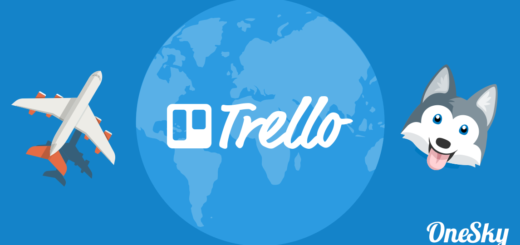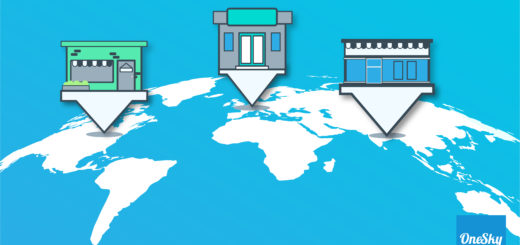Navigating Angular: Key Internationalization Examples for Apps
Did you know? Experts estimate that internationalization boosts your app’s revenue by 26% It also paves the way to quality localization steps, which can boost that value by an additional 78% in certain contexts.
In short, Angular internationalization techniques could help double your profits, at minimum. Have you dedicated enough of your resources to Angular mastery?
If not, don’t worry. You can take steps to fix that today using the tips below. We’ll also cover the common challenges of Angular localization, as well as solutions that will help bring your Angular project to success.
Angular Internationalization: A Primer
Internationalization (known also as i18n), is a term that defines the process of preparing your project for different global audiences. This is made possible by tailoring your product to “locales,” or regions — which is done by subsequent localization steps.
By pursuing Angular internationalization, you’re laying the groundwork for a successful global rollout. Angular is an easy-to-use development tool that is built on TypeScript. Devs enjoy using it to build apps due to its modular style and extensive support library.
Angular is well-known in the dev community for its extensive internationalization tools and ease of use. Its framework seamlessly supports many different languages and cultural preferences in its framework.
Showcasing Angular Internationalization: Real-World Examples
Many sources confirm that some of the world’s biggest apps are built using Angular’s wide range of component templates.
Some of the most popular examples of Angular applications include Google, Xbox, and Forbes, to name a few.
Let’s take a brief look at each entity’s success, and the impact that Angular had for global success.
- Google: Constantly changing and evolving, Google benefits from Angular’s quick-scale, consistent components, which allow for rapid expansion and quick pivots. Each Google user can feel these benefits, no matter where in the world they are.
- Forbes: Angular is incredibly easy to maintain, and is considered one of the more flexible options for your front-end. For a content-dense site like Forbes, this is essential — and it fuels the ease of use for both developers and site visitors alike.
- Simple UI additions, like language toggles and other bits, are easily kept up and protected for site visitors as a result.
- Xbox: Angular’s cross-platform nature and competitive compatibility make it ideal for sites like Xbox, which may have users coming from all browsers and device types.
Additionally, all sites and entities likely benefit from TypeScripts data types and related “perks.” Angular allows user input to have an immediate “update” function in the site without the need for additional code-writing. This means that you have a convenient solution for dynamic site content that’s both timely and cost-effective.
Technical Insights: Implementing Angular i18n in Your App
Ready to get started? Here’s a helpful quick-start guide to help you incorporate i18n in your Angular app:
- Mark relevant text in component templates that needs to be translated.
- Mark alt text that needs to be translated.
- Use built-in pipes for key pieces of dynamic content; such as numbers, dates, and currencies.
- Note plural expression forms for translation later on.
Pro tip: Marking things for translation in Angular is simple. Here’s the string to do it:
- <h1 i18n>MARK THIS MESSAGE!</h1>
Once you’ve done that, note the plural expression forms.
- { component_property, plural, pluralization_categories }
- After you note the categories, you can enter the default text language surrounded by open and closed curly braces.
After you have done these four key steps, you can consider using Angular CLI to localize the content.
Here are a few additional tips to keep in mind as you go:
- Keep it Unicode: Many devs consider this a “neutral” format that is easy to work within when implementing i18n.
- Localize as you go: Many entities choose to localize simultaneously, rather than at the end. For example — once you lay the proper back-end, an internationalized framework for buttons in different locales, consider the localized content of the button itself (and execute). Move down the page as each section is done.
- Give the user autonomy. Adding a universal language selector (or, a ULS) is never a bad idea. By doing so, you remove a barrier to content consumption and position your brand well for viewers who don’t speak English or the site’s source language.
Common Challenges in Angular Internationalization
Above all, the most common challenge around the e-space is the time it takes to complete Angular internationalization. While the modular framework keeps it simple, developers with complex apps might find it difficult to automate — requiring a lot of man-hours.
The fix: Bringing on quality translators and systems to populate content quickly, allowing for any tweaks and changes to be made in a more efficient manner. Additionally, devs should consider exploring templates or blocks to streamline their development process. They can do this using the support library associated with Angular, GitHub, or other tutorials found online.
The second most common challenge is more of a misbelief. Some feel that new content requires a complete redeployment, which — while true in some cases — isn’t in all cases.
The fix: Using TypeScripts data types can help to alleviate this stress, allowing for dynamic repopulation based on user input. This in itself requires little to no manual code-writing. Angular also allows for string interpolation for dynamic content, further addressing this pain point and limiting its effects.
OneSky’s Integration with Angular for Seamless Localization
OneSky’s comprehensive and centralized translation management system (or, TMS), provides devs with the quality translated content and syntax they need to build out localized translation files. This helps to proactively address i18n issues and hastens the localization process as the app is developed.
Using OneSky’s convenient and supportive TMS directly addresses both pain points above — preparing your application for changes via rapid string interpolation as needed, and allowing a more efficient localization and routing process as you prepare to launch.
Transform Your App with OneSky’s Angular Solutions
Angular is a powerful tool that has fueled the success of some of the world’s biggest apps. It is a more competitive option than CSS or JavaScript alone, allowing you to emphasize essential i18n attribute pieces and localization steps prior to launch.
While it can be overwhelming, it can be helpful to remember that you don’t have to get intimidated as you search for software options and providers. There are plenty of step-by-step tutorials available online that can help you maximize your benefits when you use Angular or similar tools. This, coupled with a skilled dev team and a seamless TMS, can be just what you need to propel your app to success.
OneSky is here to support you, integrate with your Angular setup, and provide you with translated content you can count on for a successful launch. Our team of 1,000+ translators can support you across 50+ languages, helping you to accelerate your dev timeline and jump-start your app growth.
Ready to experience the difference that a skilled translation management team and service can bring to your app dev journey? Connect with us online to start for free today.



 Written by -
Written by - 





 Written by
Written by 


